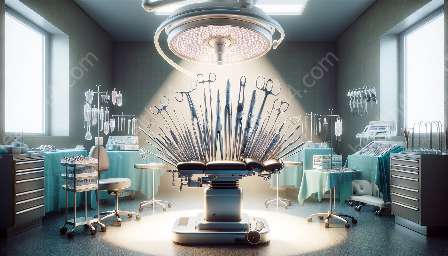Trocars are essential tools in the field of surgery, playing a crucial role in minimally invasive procedures. As part of surgical instruments and medical devices and equipment, trocars facilitate safe and effective access to the body's cavities. In this comprehensive guide, we delve into the function, design, and significance of trocars, exploring their relationship to the broader context of surgical instruments and medical devices and equipment.
The Function of Trocars in Surgery
Trocars are specialized instruments designed to create a pathway into the body for other surgical instruments to pass through. This access is essential for performing minimally invasive surgeries, where smaller incisions are made, reducing trauma to the patient and speeding up recovery times.
By using trocars, surgeons can insert cameras and other tools into the body with precision, allowing them to visualize internal structures and perform intricate procedures with minimal disruption to surrounding tissues.
Design and Components of Trocars
Trocars typically consist of three main components: a sharp, pointed instrument known as the obturator, a sleeve that encases the obturator and provides a pathway into the body, and a seal system that minimizes the escape of gases or fluids during the surgical procedure.
The design of trocars has evolved to optimize safety and efficiency. Modern trocars often feature ergonomic handles and mechanisms for controlled insertion and removal, as well as mechanisms to prevent inadvertent needlesticks and other complications.
Compatibility with Surgical Instruments
Trocars are closely intertwined with a wide range of surgical instruments. These instruments, such as forceps, scissors, graspers, and dissectors, work in conjunction with trocars to carry out specific tasks within the body. The precise placement and use of trocars determine how effectively other surgical instruments can be utilized during a procedure.
Furthermore, trocars come in various sizes and designs to accommodate different surgical requirements, allowing for the use of specialized surgical instruments tailored to specific procedures.
Integration with Medical Devices and Equipment
In addition to their compatibility with surgical instruments, trocars also interact with various medical devices and equipment. For example, trocars are utilized in laparoscopic procedures, where they facilitate the insertion of endoscopes, cameras, and illumination sources.
Furthermore, trocars play a crucial role in enabling the deployment of advanced medical devices, such as robotic surgical systems. These devices rely on trocars to gain access to the body and carry out complex maneuvers with precision.
Significance in Minimally Invasive Surgery
As minimally invasive surgery continues to gain prominence in the medical field, the role of trocars becomes increasingly vital. These tools enable surgeons to perform intricate procedures with minimal trauma to the patient, reduced postoperative pain, and faster recovery times.
Trocars have revolutionized surgical practices, allowing for a shift from traditional open surgeries to less invasive techniques. This transformation has had a significant impact on patient outcomes, leading to improved overall recovery and reduced healthcare costs.
Conclusion
Trocars are indispensable components of modern surgical practices, seamlessly integrating with surgical instruments and medical devices and equipment. Their intricate design and vital function are pivotal in advancing the field of minimally invasive surgery, ultimately benefiting patients and healthcare providers alike.


